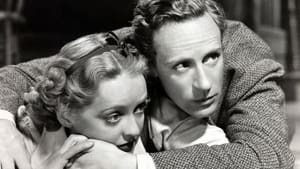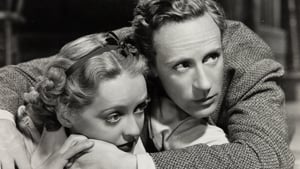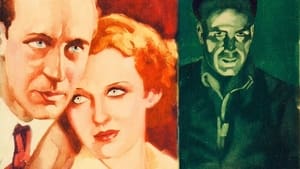Contact: info@alwanfilm.com
Video Sources 0 Views
- Watch trailer
- The Petrified Forest


Synopsis
Table of Contents
ToggleReview: The Petrified Forest 1936 Colorized – A Gripping Tale of Fate and Desperation

Introduction
“The Petrified Forest” (1936) stands as a cinematic masterpiece that continues to captivate audiences with its riveting narrative and stellar performances. In this review, we’ll explore the significance of this classic film and its enduring legacy in the realm of drama.
Check The Full Colorized Movies List
Check Our Colorized Movies Trailer Channel
Understanding The Petrified Forest 1936 Colorized: Director, Cast, and Genre
Directed by the visionary Archie Mayo, “The Petrified Forest” (1936) showcases his mastery of storytelling and character development. The film features an exceptional cast, including Leslie Howard, Bette Davis, and Humphrey Bogart, who deliver unforgettable performances that elevate the film to legendary status. Blending elements of suspense, romance, and existential drama, “The Petrified Forest” (1936) transports viewers to a remote diner in the Arizona desert, where fate and destiny collide in a tale of desperation and longing.
Exploring the World of The Petrified Forest 1936 Colorized: Plot and Characters
At its core, “The Petrified Forest” (1936) follows the intersecting lives of a disillusioned writer, a free-spirited waitress, and a notorious gangster, whose fates become intertwined during a fateful encounter at the Black Mesa Diner. As tensions rise and secrets are revealed, the characters find themselves grappling with themes of identity, mortality, and the search for meaning in a world consumed by chaos and uncertainty.
The Art of Film Colorization
While “The Petrified Forest” (1936) was originally filmed in black and white, its timeless themes and compelling characters make it a prime candidate for colorization. By adding color to the film’s stark desert landscapes and vibrant characters, colorization breathes new life into this classic tale, inviting viewers to experience its beauty and intensity in a fresh and immersive way.
Early Colored Films: A Brief History
The history of colored films traces its roots back to the early days of cinema, with filmmakers experimenting with various techniques to add color to their creations. From hand-tinted frames to early Technicolor processes, the evolution of colored film has been marked by innovation and creativity, paving the way for the development of modern colorization techniques that continue to captivate audiences to this day.
The Petrified Forest 1936 and Its Early Colored Version
The decision to release “The Petrified Forest” (1936) in a colorized format was met with anticipation and excitement. While some purists may have reservations about altering the film’s original aesthetic, the early colored version offers viewers a fresh perspective on this timeless tale, allowing them to experience its beauty and intensity in a new and captivating way.
The Debate Over Film Colorization
The debate over film colorization is a complex and multifaceted issue, with passionate arguments on both sides of the divide. Proponents argue that colorization revitalizes classic movies for modern audiences, breathing new life into timeless stories and introducing them to a new generation of viewers. However, detractors maintain that colorization compromises the artistic integrity of the original work and diminishes its historical significance. As the debate rages on, filmmakers and audiences alike are left to ponder the merits and drawbacks of colorization in the ever-evolving landscape of cinema.
Examining The Petrified Forest 1936 as an Early Colored Film
As with any colorized classic, the impact of colorization on “The Petrified Forest” (1936) is a matter of personal interpretation. Some may argue that it enhances the film’s visual appeal and immerses viewers in its world, while others may feel that it detracts from the stark beauty of the original black and white version. Regardless of one’s stance on the issue, there’s no denying the enduring power of “The Petrified Forest” (1936) as a timeless masterpiece that continues to captivate audiences with its gripping narrative and unforgettable characters.
Influence and Legacy: The Petrified Forest 1936 Colorized’s Impact on Cinema
“The Petrified Forest” (1936) has left an indelible mark on the world of cinema, inspiring countless filmmakers and captivating audiences with its timeless tale of fate and desperation. From its gripping performances to its haunting cinematography, the film continues to resonate with viewers of all ages, reaffirming its status as a beloved classic of the drama genre.
Director’s Cinematic Legacy: Beyond The Petrified Forest 1936 Colorized
Archie Mayo’s influence extends far beyond “The Petrified Forest” (1936), with a diverse body of work that continues to captivate audiences around the globe. From “The Adventures of Marco Polo” to “Angel on My Shoulder,” Mayo’s films are celebrated for their compelling narratives, dynamic characters, and timeless themes, solidifying his legacy as one of the preeminent directors of Hollywood’s Golden Age. Through his groundbreaking work, Mayo has left an indelible imprint on the world of cinema, inspiring generations of filmmakers to follow in his footsteps.
Themes Explored in The Petrified Forest 1936 Colorized
“The Petrified Forest” (1936) explores a myriad of themes, from the nature of identity and the pursuit of purpose to the inevitability of fate and the fragility of human existence. Through its richly drawn characters and evocative storytelling, the film invites viewers to ponder the mysteries of life and the depths of the human soul. As audiences immerse themselves in the world of “The Petrified Forest” (1936), they are reminded of the universal truths that bind us together and the enduring power of storytelling to illuminate the darkest corners of the human experience.
Reception and Controversy Surrounding The Petrified Forest 1936 Colorized
Upon its release, “The Petrified Forest” (1936) received widespread critical acclaim, with many praising its taut screenplay, atmospheric direction, and standout performances. However, the decision to release the film in a colorized format sparked debate among purists, reigniting the age-old discussion surrounding film preservation and artistic integrity. Despite the controversy, “The Petrified Forest” (1936) remains a beloved classic that continues to resonate with audiences of all ages, reaffirming its status as a timeless masterpiece of the drama genre.
Where to Watch The Petrified Forest 1936 Colorized Online
For those eager to experience the timeless magic of “The Petrified Forest” (1936), the film is readily available on popular streaming platforms such as Netflix, Amazon Prime, and Hulu. Whether you choose to watch it in its original black and white format or the early colored version, “The Petrified Forest” (1936) promises to transport you to a world of mystery and intrigue, where fate and destiny collide in a tale of desperation and longing.
FAQs About The Petrified Forest 1936 Colorized
Q: Is “The Petrified Forest” (1936) based on a true story? A: No, “The Petrified Forest” (1936) is a fictional tale crafted by screenwriter Charles Kenyon, who drew inspiration from various sources to create a gripping narrative that continues to captivate audiences to this day.
Q: Who are the main actors in “The Petrified Forest” (1936)? A: “The Petrified Forest” (1936) features an ensemble cast led by the talented Leslie Howard, Bette Davis, and Humphrey Bogart, whose dynamic performances elevate the film to legendary status.
Q: What awards did “The Petrified Forest” (1936) win? A: While “The Petrified Forest” (1936) did not win any major awards, it received critical acclaim for its taut screenplay, atmospheric direction, and standout performances.
Q: Why was “The Petrified Forest” (1936) released in a colorized format? A: The decision to release “The Petrified Forest” (1936) in color was made to introduce the film to a new generation of viewers and enhance its visual appeal for modern audiences. While the choice to colorize the film sparked debate among purists, it ultimately allowed “The Petrified Forest” (1936) to reach a wider audience and ensure its continued relevance in the annals of cinematic history.
Conclusion
“The Petrified Forest” (1936) remains a cinematic masterpiece that continues to captivate audiences with its gripping narrative, unforgettable characters, and timeless themes. Whether viewed in its original black and white format or the early colored version, the film stands as a shining example of the power of storytelling to illuminate the human experience and inspire generations of viewers. As we reflect on its enduring legacy, let us celebrate the timeless magic of “The Petrified Forest” (1936) and the lasting impact it has had on the world of cinema.














